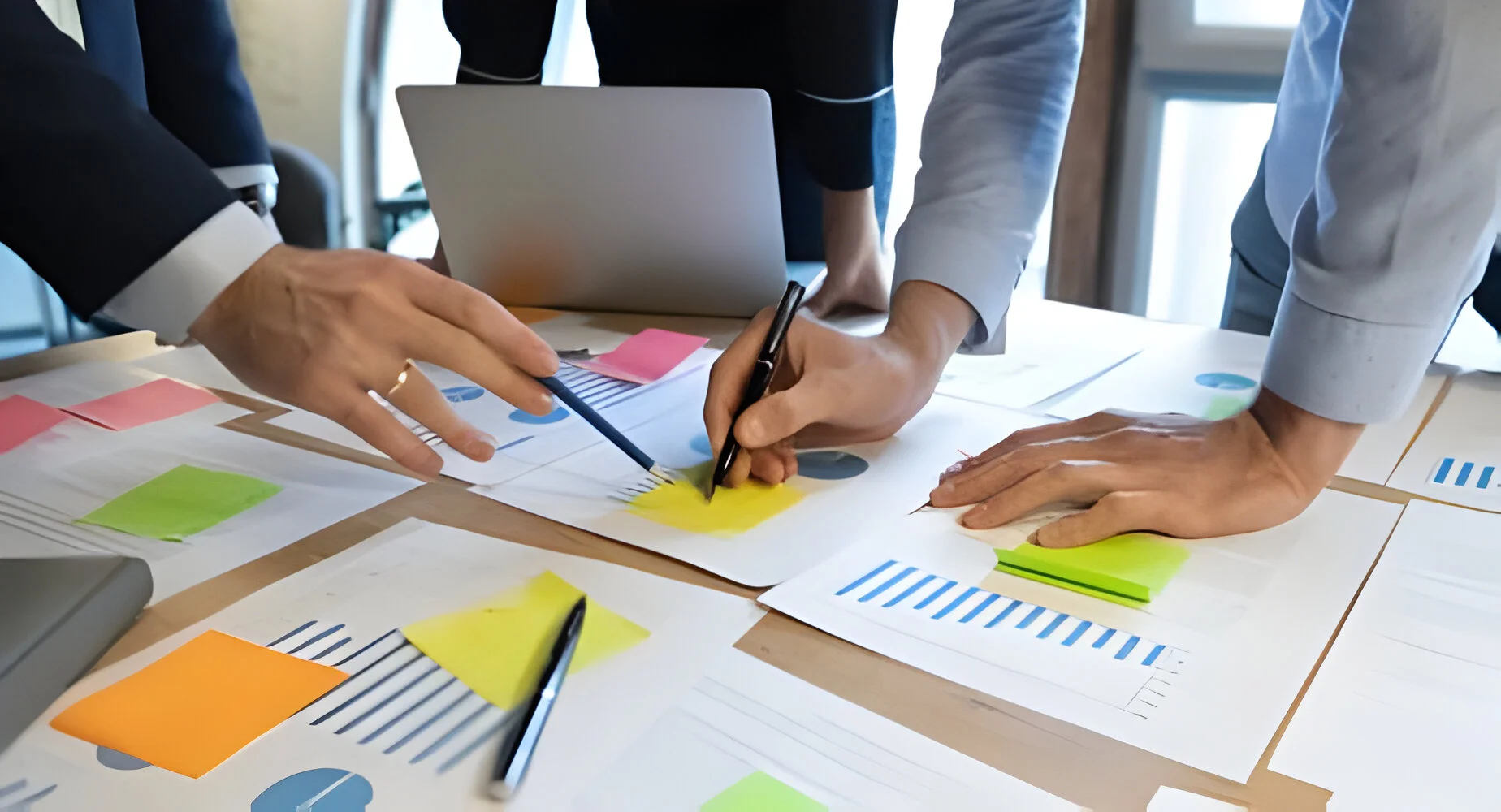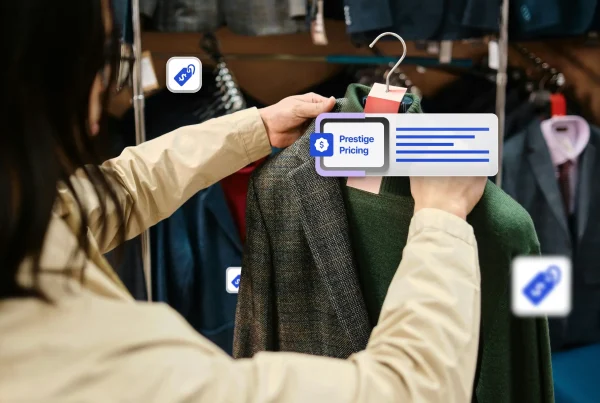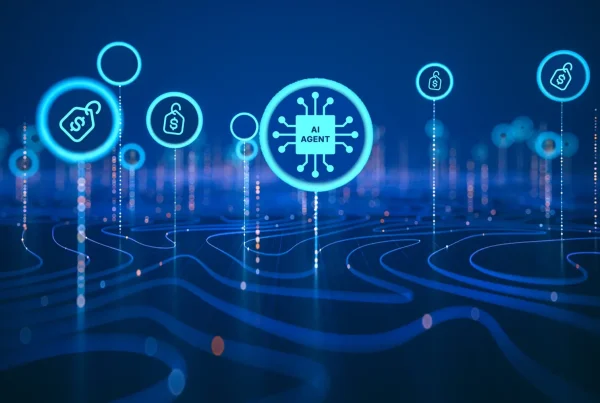Would you agree that customer trends are shifting faster than your production lines can keep up with? Are you struggling to predict what will fly off the shelves and what will gather dust? In today’s dynamic market, traditional forecasting methods leave you guessing. But what if you could anticipate demand with pinpoint accuracy, not just months in advance, but in real time?
Discover how demand forecasting and demand sensing revolutionize your inventory management. This blog dives deep into both these strategies and will unveil the secrets to maximizing efficiency, minimizing waste, and keeping your customers coming back for more.
Let’s get started!
Demand Sensing Overview
Demand sensing solutions offer you an unparalleled advantage in meeting the fast-paced changes of today’s market. Unlike traditional demand forecasting, which relies on historical data to predict future needs, demand sensing uses real-time data to provide a near-immediate view of market demand. This approach enables you to adjust your strategies dynamically, ensuring that your inventory levels, production schedules, and distribution plans align precisely with current market conditions.
The core of demand sensing technology lies in its ability to process and analyze vast amounts of data from a variety of sources. These sources include point-of-sale transactions, online consumer behavior, social media trends, weather forecasts, and more. By synthesizing this data, demand-sensing algorithms predict short-term demand with remarkable accuracy. This capability enables you to respond with agility to sudden shifts in consumer behavior or unexpected disruptions in the supply chain.
One of the primary goals of demand sensing is to reduce the latency between demand signal detection and your response. Traditional forecasting methods often lead to a lag, as they depend on cyclical review periods to adjust predictions. In contrast, demand sensing updates demand forecasts continuously, allowing real-time adjustments. This immediacy minimizes the risk of stockouts and excess inventory, thereby reducing waste and improving profitability.
Integrating demand sensing into your supply chain operations requires a robust technological infrastructure and a culture of agility and flexibility. You must be ready to act on the insights provided by demand sensing, which may involve changing production plans, reallocating inventory, or adjusting distribution routes on short notice. While this might seem daunting, the benefits in terms of increased efficiency, reduced costs, and enhanced customer satisfaction are well worth the investment. Now, let’s understand demand forecasting.
Demand Forecasting Overview
Demand forecasting is your strategic advantage, enabling precise anticipation of market demands and guiding your business operations toward success. This analytical process involves evaluating historical data, market trends, and statistical models to predict your customers’ future needs. Armed with this information, you set realistic sales targets, sharpen your marketing strategies, and allocate resources efficiently. Demand forecasting ensures your business remains agile and competitive, fully prepared to meet the evolving needs of the market.
Effective inventory and production planning pivot on your ability to forecast demand accurately. This foresight allows you to maintain the perfect inventory balance, avoiding both excess stock that ties up capital and stockouts that lead to lost sales. Additionally, it ensures that production schedules align with anticipated demand, optimizing manufacturing resources, reducing waste, and enhancing operational efficiency. By mastering demand forecasting, you ensure smooth operations and wise capital investment, positioning your inventory and production to meet market demand head-on.
Moreover, demand forecasting fortifies your supply chain, prepares you for market fluctuations, and centers your business around customer satisfaction. With a clear vision of future demand, you synchronize supply chain operations while minimizing bottlenecks and delays. This readiness equips you to navigate risks, seize market opportunities, and ensure your customers always find what they need. Demand forecasting not only boosts sales and strengthens your brand reputation but also cultivates a loyal customer base, driving your business toward sustainable growth and success.
💡Fact
According to McKinsey, AI-driven forecasting cuts lost sales and product shortages by 65%.
Understanding the Difference Between Demand Sensing and Demand Forecasting
Ever feel like your customers are one step ahead? New trends emerge overnight, and yesterday’s hot item collects dust on the shelf. This table breaks down the key differences between demand sensing and demand forecasting, enabling you to choose the right approach—to keep your inventory agile and responsive.
| Demand Sensing | Demand Forecasting |
| Objective | |
| Focuses on short-term market demand to respond swiftly to immediate changes. | Aims to predict long-term demand trends based on historical data and patterns. |
| Data Utilized | |
| Leverages real-time data sources, including current sales data, social media trends, weather forecasts, and market news. | Primarily relies on historical sales data, time series analysis, and sometimes external factors like economic indicators. |
| Update Frequency | |
| Continuously updates predictions, often daily or hourly, to reflect real-time market conditions. | Updates forecasts at regular intervals, typically monthly, quarterly, or annually, depending on the business cycle. |
| Technology and Analytics | |
| Employs advanced analytics, machine learning, and sometimes AI to process and analyze diverse data streams quickly. | Uses statistical models and time-series analysis to identify trends and patterns over time. |
| Response Time | |
| Enables rapid response to market changes, allowing businesses to adjust supply chain operations dynamically. | Supports strategic planning and long-term supply chain adjustments with a broader time horizon. |
| Accuracy | |
| High accuracy in the short term due to the use of real-time data and quick adjustments. | Accuracy varies depending on the quality of historical data and the ability to account for future uncertainties. |
| Complexity | |
| Requires sophisticated analytical tools and systems capable of handling large volumes of real-time data. | Less complex technologically, though it demands thorough analysis and understanding of historical trends and forecasting models. |
| Benefits | |
| Minimizes the risk of stockouts or excess inventory, enhances customer satisfaction, and improves operational efficiency. | Aids in strategic planning, resource allocation, and long-term inventory management. |
| Challenges | |
| Needs constant data flow and advanced analytical capabilities, which are resource-intensive. | May not quickly adapt to sudden market shifts or unexpected events. |
| Ideal Use Case | |
| Best for industries with high volatility, short product lifecycles, or those that need to respond quickly to market trends. | Suited for industries with stable demand patterns or where long-term planning and forecasting are critical. |
Challenges and Limitations
Navigating supply chain management demands a keen understanding of demand forecasting and demand sensing. Each of these strategies comes with its unique set of limitations and challenges that you must consider to maximize their effectiveness. Let’s begin with the limitations and challenges of demand forecasting and then demand sensing.
Demand Forecasting
- Data Dependency: Demand forecasting relies heavily on historical data. This reliance becomes a double-edged sword. In scenarios where market conditions shift rapidly, historical data may not accurately predict future demands. You must continuously update and analyze data sources to ensure relevance and accuracy.
- Inflexibility to Sudden Market Changes: Traditional demand forecasting methods often struggle to adapt quickly to unexpected market shifts. These methods typically provide a long-term view, making short-term adjustments challenging. Staying agile requires you to complement demand forecasting with more reactive measures.
- Complexity in Incorporating External Factors: While demand forecasting includes external factors such as economic indicators or market trends, accurately quantifying these influences remains complex. Misjudging their impact skews your forecasts, leading to overstocking or stock shortages.
- Resource Intensive: Developing accurate forecasts demands significant resources. It includes sophisticated software and skilled analysts. This investment is substantial, particularly for small to medium-sized businesses.
Demand Sensing
- Short-term Focus: While demand sensing excels in adjusting to immediate market conditions, its short-term focus limits its usefulness for long-term strategic planning. Balancing demand sensing with forecasting methods that provide a longer view is essential for comprehensive strategy development.
- Data Volume and Quality: Demand sensing requires real-time data from a variety of sources, including point-of-sale systems, social media, and weather forecasts. Managing this data volume and ensuring its quality pose significant challenges. Inaccurate or incomplete data leads to misleading insights.
- Technology and Infrastructure Requirements: Implementing demand sensing effectively requires advanced technology and infrastructure. This includes software capable of processing and analyzing large volumes of data in real time, which represents a significant investment.
- Skills and Expertise: Leveraging demand sensing fully requires a team with specific skills in data analysis and interpretation. Finding and retaining talent with these specialized skills is difficult and costly.
While both demand forecasting and demand sensing offer powerful benefits for supply chain management, they present unique challenges. Demand forecasting provides valuable insights for long-term planning. However, it may struggle to adapt to rapid market changes. In contrast, demand sensing offers agility and responsiveness. But, it requires significant technological investment and primarily focuses on the short term.
Conclusion
The journey from demand forecasting to demand sensing marks a pivotal evolution in how businesses anticipate and fulfill market demand. Demand forecasting lays the groundwork for strategic planning with its long-term outlook. Demand sensing, on the other hand, offers the agility to navigate the short-term fluctuations that characterize today’s market. Integrating both approaches after understanding their capabilities and limitations, you harness the strengths of each, optimizing your inventory levels and aligning production closely with actual market needs.
Take the Next Step
Demand sensing does not replace demand forecasting; instead, it enhances it. Together, they form a powerful duo that equips you with a comprehensive view of market demand, from broad trends to immediate shifts.
Stay ahead of demand shifts with real-time demand sensing. Forecast demand accurately using advanced machine learning algorithms, tailored to every SKU, store, and hierarchy level. Optimize short-term strategies and seize opportunities with demand-sensing insights for agile and proactive decision-making.
Frequently Asked Questions
Can businesses integrate both demand sensing and forecasting for better results?
Yes, businesses successfully integrate demand sensing with demand forecasting to enhance accuracy. This combination leverages real-time data for immediate adjustments and historical trends for long-term strategy, offering a comprehensive demand planning approach.
How do businesses choose between demand sensing and forecasting?
Businesses evaluate their needs based on market volatility, product lifecycle, and data availability. Demand forecasting suits long-term planning in stable markets. On the other hand, demand sensing excels in fast-paced environments requiring quick adjustments.
What are the key challenges in implementing demand sensing?
Implementing demand sensing poses challenges like managing large volumes of real-time data, requiring advanced technology and infrastructure, and necessitating specialized skills for data analysis and interpretation to drive accurate decision-making.





